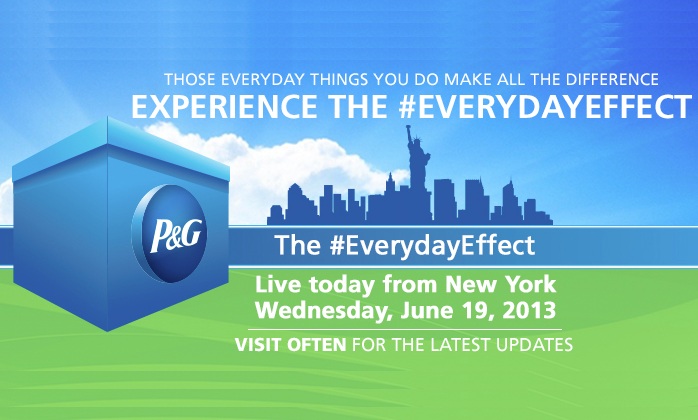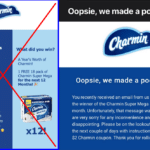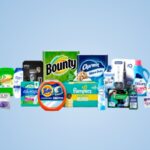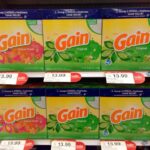
Procter and Gamble is spending a bundle on a promotion today that will put “high-value coupons” and tens of thousands of free products into the hands of New York City residents. Meanwhile, the rest of the country is spending a bundle on P&G products, with the help of generous 25-cent off coupons.
What gives?
While you debate whether it’s even worth your time to clip a coupon for a quarter off a multi-pack of Charmin that costs north of ten bucks, Manhattanites are enjoying a bounty of freebies today. P&G “brand ambassadors” are fanning out across the city, to distribute more than 40,000 free products representing 25 brands, including Cover Girl, Gillette, Duracell, Pampers, Old Spice, Febreze and Crest. P&G is calling it “the largest consumer event in the company’s 175 year history”.
Bloomberg Businessweek calls it “a fairly anachronistic strategy in an age of ad-words and sponsored blog posts.” At least one marketing expert tells Bloomberg that it will probably cost P&G more than can be made back with any new business it brings.
Coupons are cheap, though. Wouldn’t, say, a 50-cent off Charmin coupon entice more people to try it than giving away samples on the street?
The idea, of course, is to actually get P&G’s products into the hands of consumers – not just offer them a discount and hope they’ll bite. It’s also the last hurrah of outgoing P&G CEO Bob McDonald, who has been minding the store during a lackluster year for the corporate giant. Similar to what recently happened with JCPenney (read: “RIP JCP CEO: No Coupons, No Sales = No Job”), McDonald is being replaced by his own predecessor, A.G. Lafley.
And Lafley appears to like coupons.
McDonald has emphasized sampling and innovation, recently deriding a competitor that offered coupons instead of a new product. When P&G and a competitor launched new hair care brands, a “third competitor who did not have a very strong innovation program this quarter put instantly redeemable coupons on all of their hair care offerings in every store,” McDonald sniffed in April, mocking the move as “promotion spending when you don’t have innovation.”
In contrast, one of Lafley’s last acts during his first stint as CEO was to boost the company’s coupon offerings. “Coupon redemptions go up in recessionary times,” he explained in early 2009. “We have clearly shifted dollars to coupons,” he went on, while assuring investors that “every one of our coupons has a brand equity communication message on it and it has a performance value message on it, so it is not just $0.50 off your next purchase.” Whatever that means.
P&G has had a complicated relationship with coupons, even before McDonald and Laffley came along. Several years and CEO’s ago, P&G experimented with offering no coupons whatsoever. This was way back in 1996, in what was called a “Zero Coupons” test. In parts of upstate New York, P&G decided not to distribute its usual Sunday newspaper coupon inserts. Instead, it offered “everyday low prices” on its products in area stores.
And the experiment bombed. Consumers howled in protest, and New York’s Attorney General even got involved, launching an antitrust investigation to see whether P&G had conspired with grocery chains to institute the test. “Procter & Gamble woke up a sleeping giant with coupons in its pocket,” one local government official said. “P&G’s top management turned their dislike for coupons into a well-publicized battle,” columnist Martin Sloane wrote at the time. P&G’s aim, he asserted, was “to start an anti-coupon bandwagon that other manufacturers would be forced to hop onto.” But competitors, and consumers, didn’t go for it.
More recently, P&G refused to get on board with printable coupons, long after most other manufacturers embraced sites like Coupons.com. To its credit, P&G finally began offering printable coupons last year, and now offers them on its own website as well. Even so, a company spokesperson recently told Coupons in the News that offering printable coupons remains a “test”. Its official coupon redemption policy (last updated more than three years ago) still insists that “P&G does not authorize any coupon promotions that can be printed on computer equipment. Coupons printed on computer equipment will not be honored.”
But back to New York, where consumers are enjoying their freebies and coupons today. P&G is encouraging recipients to share their experiences on social media and help build buzz for the company. But the risk is that those lucky consumers will just annoy everyone outside of New York who are wondering where their own freebies are. If this costly experiment doesn’t help lift P&G’s fortunes, perhaps they’ll try something else to get us to buy their products. Hint: it’s small, rectangle and has a dollar value on it. Just saying.










